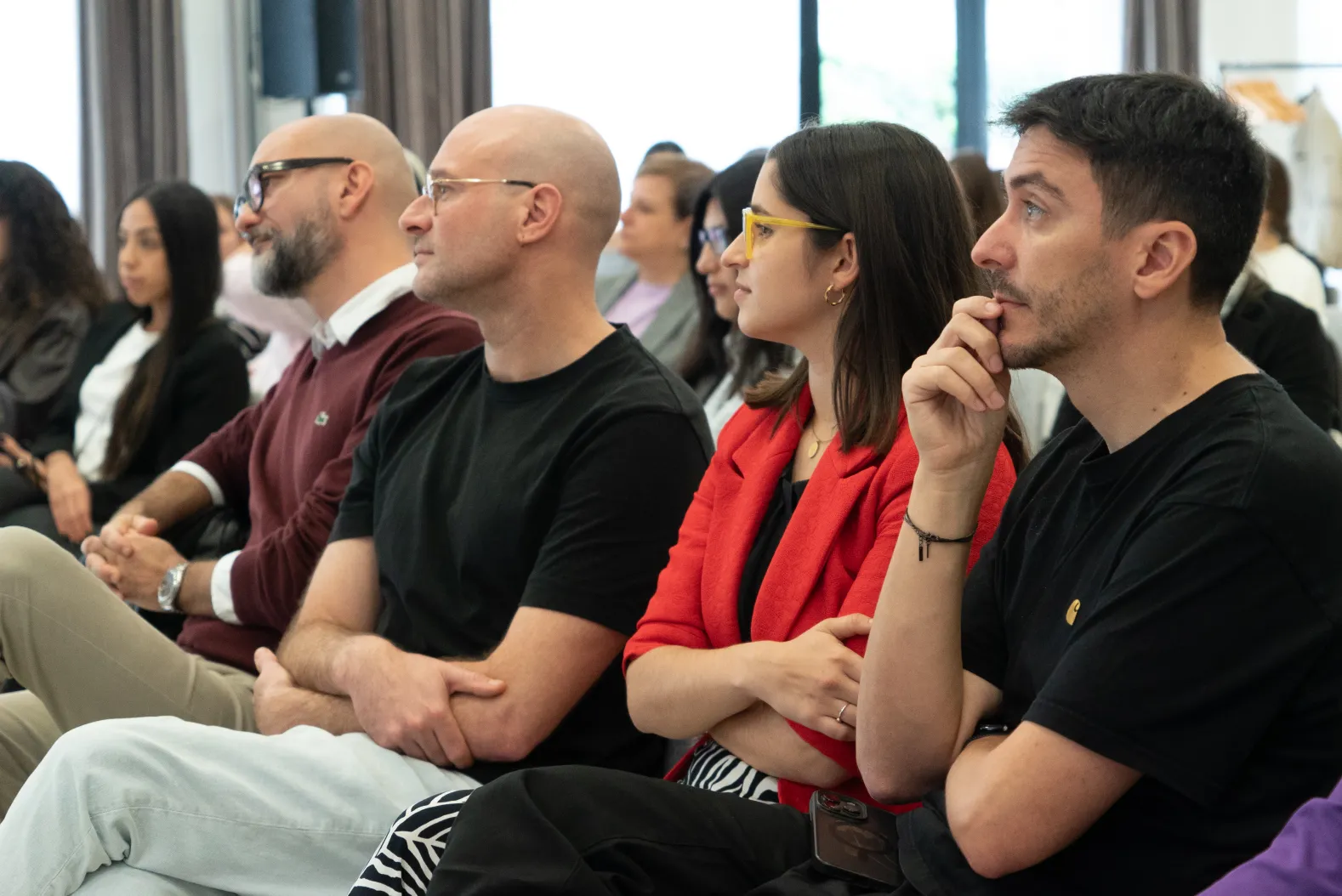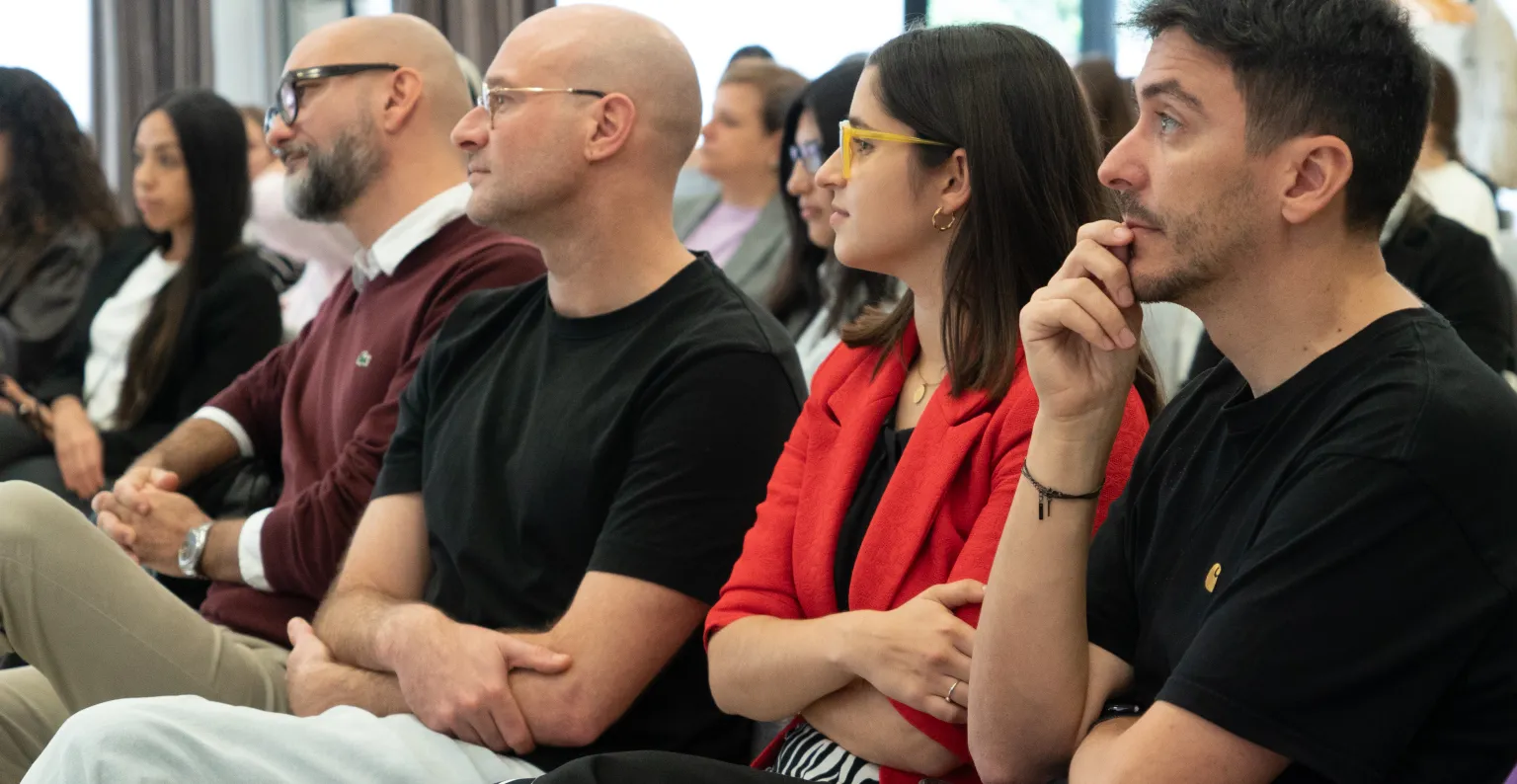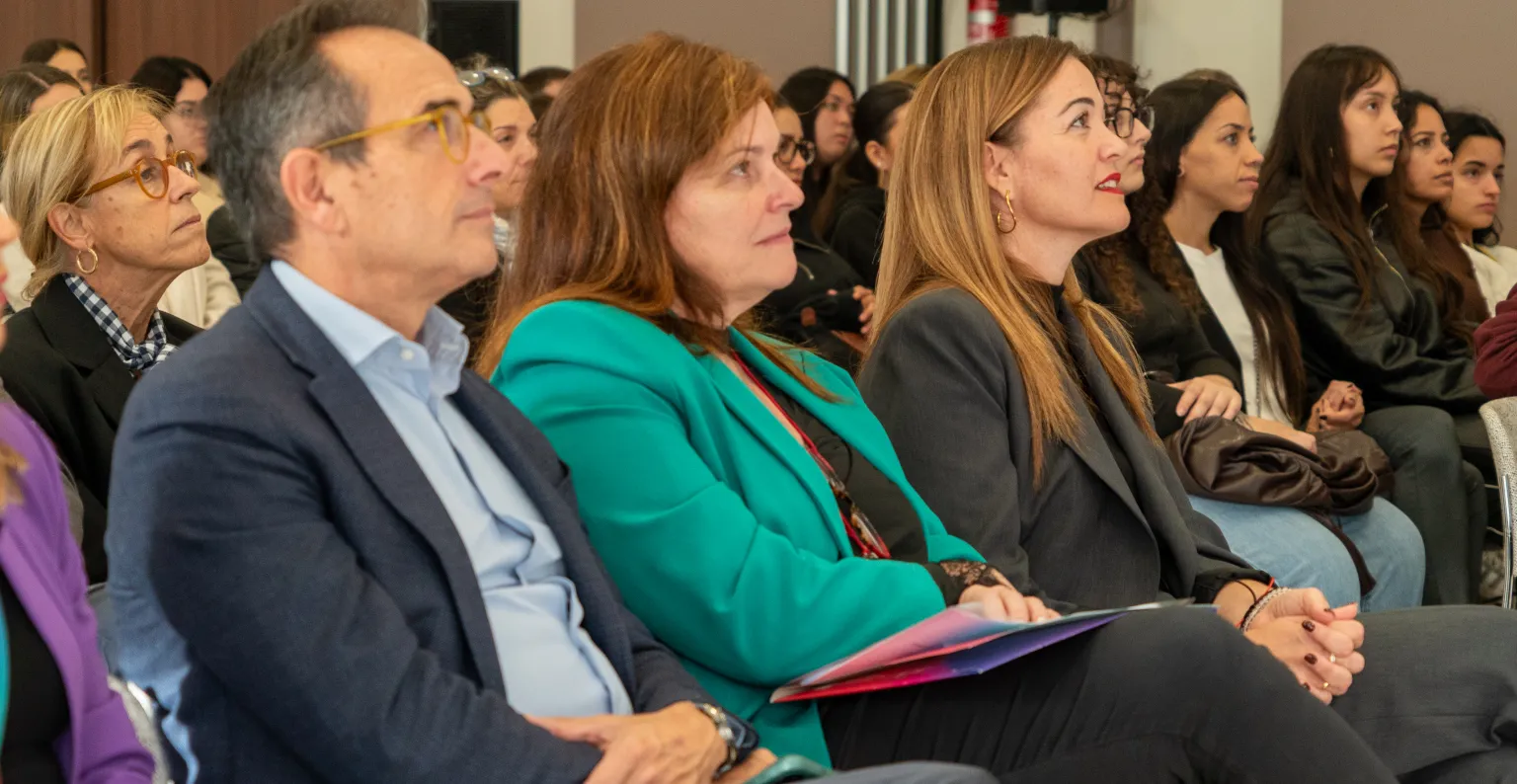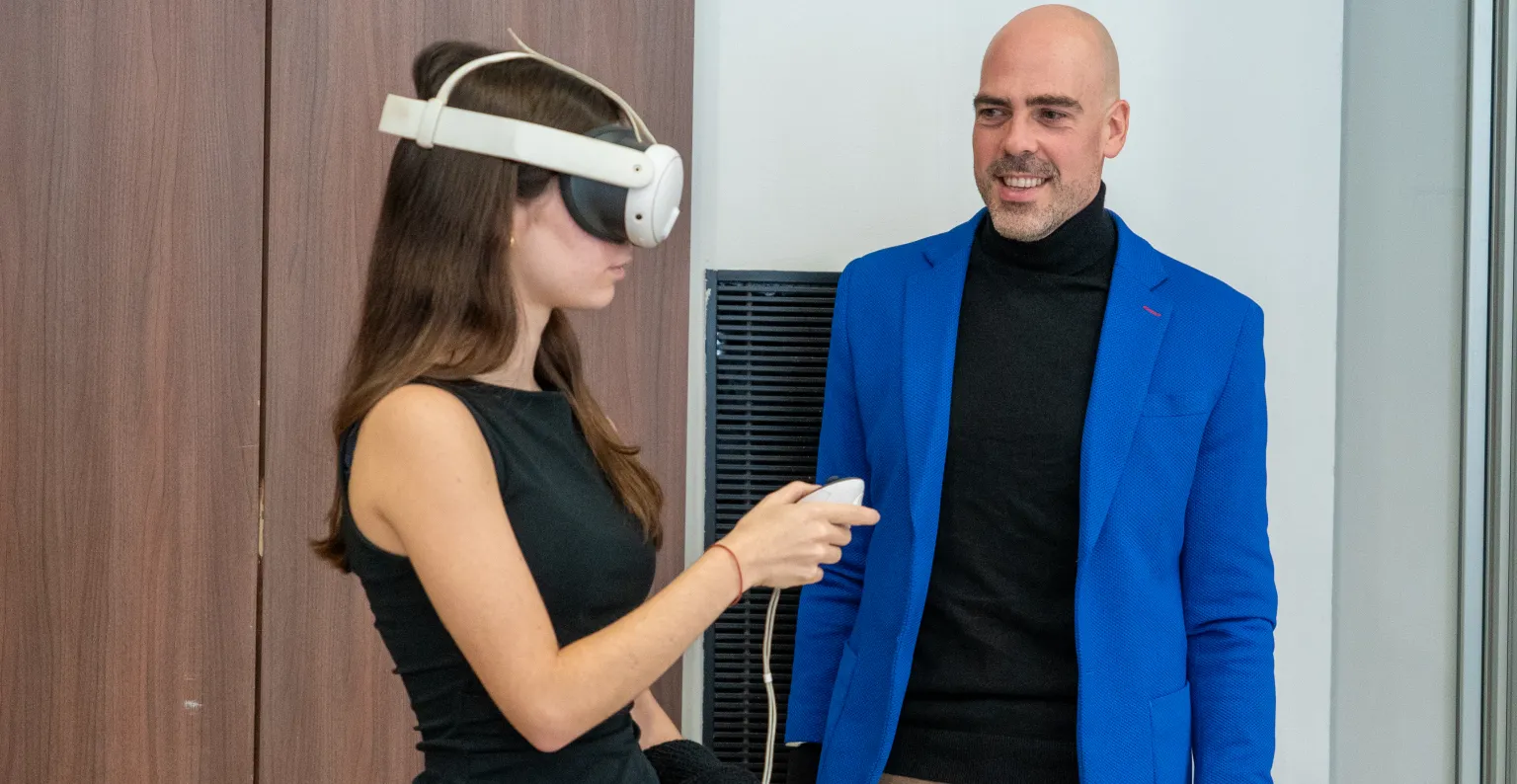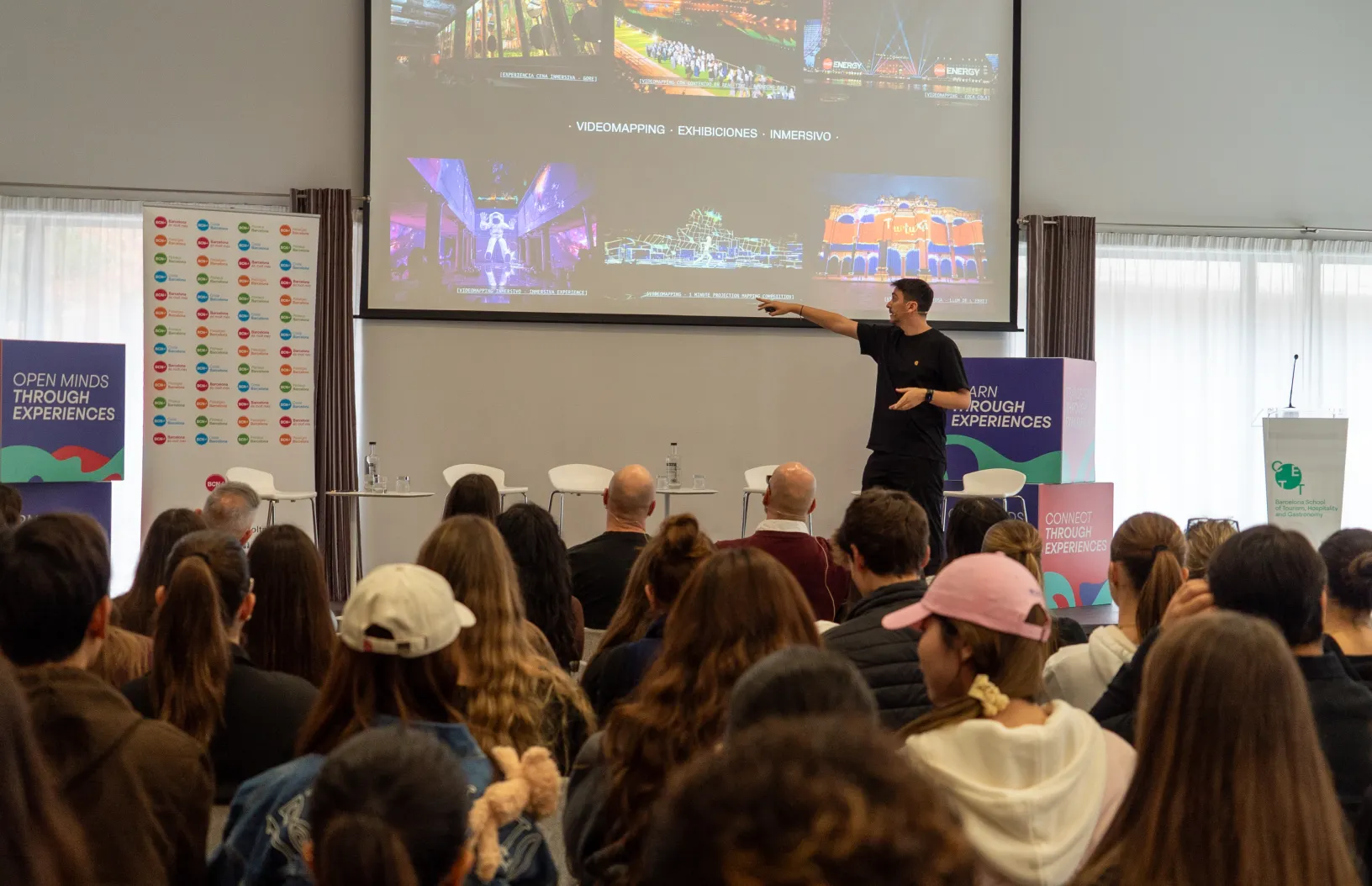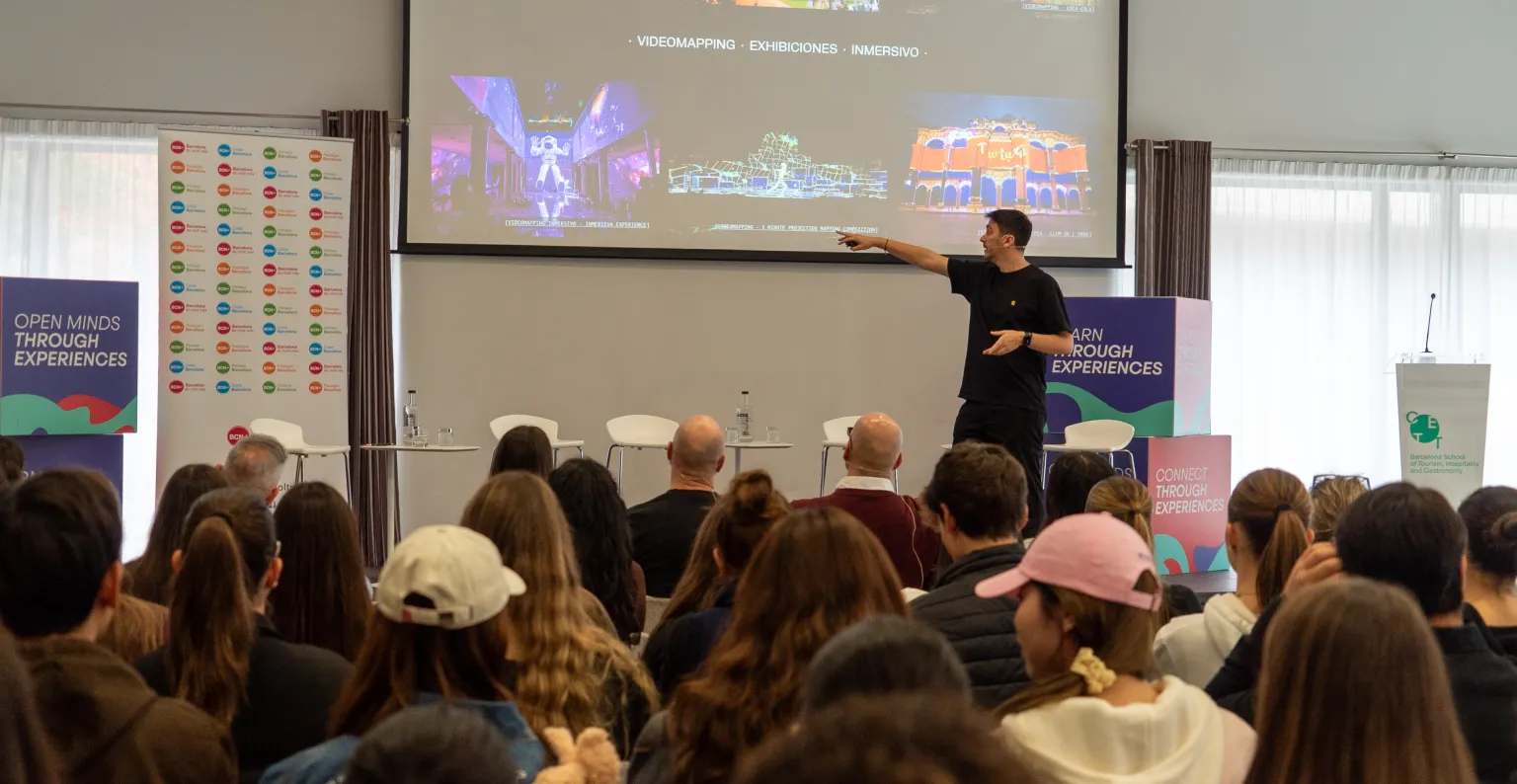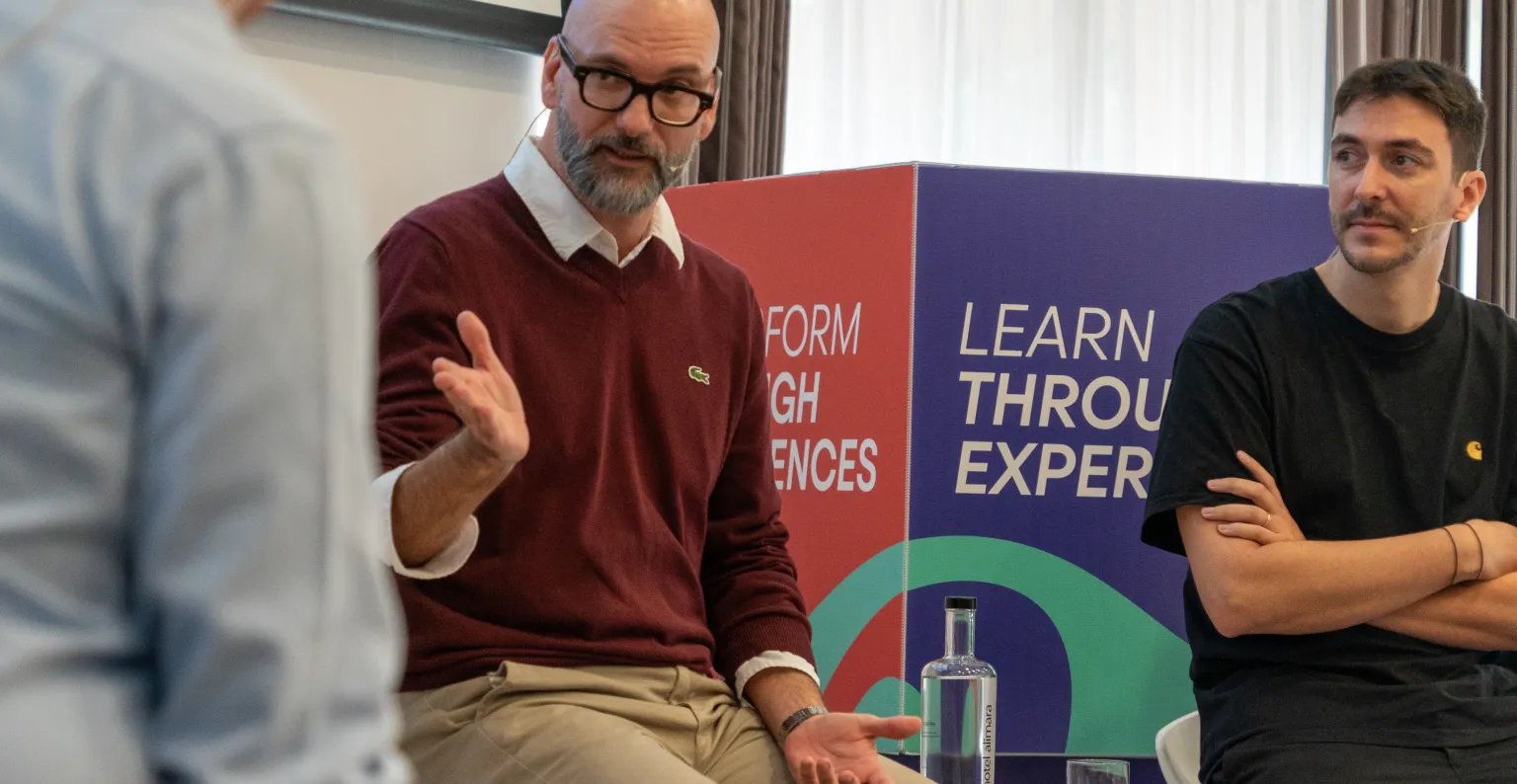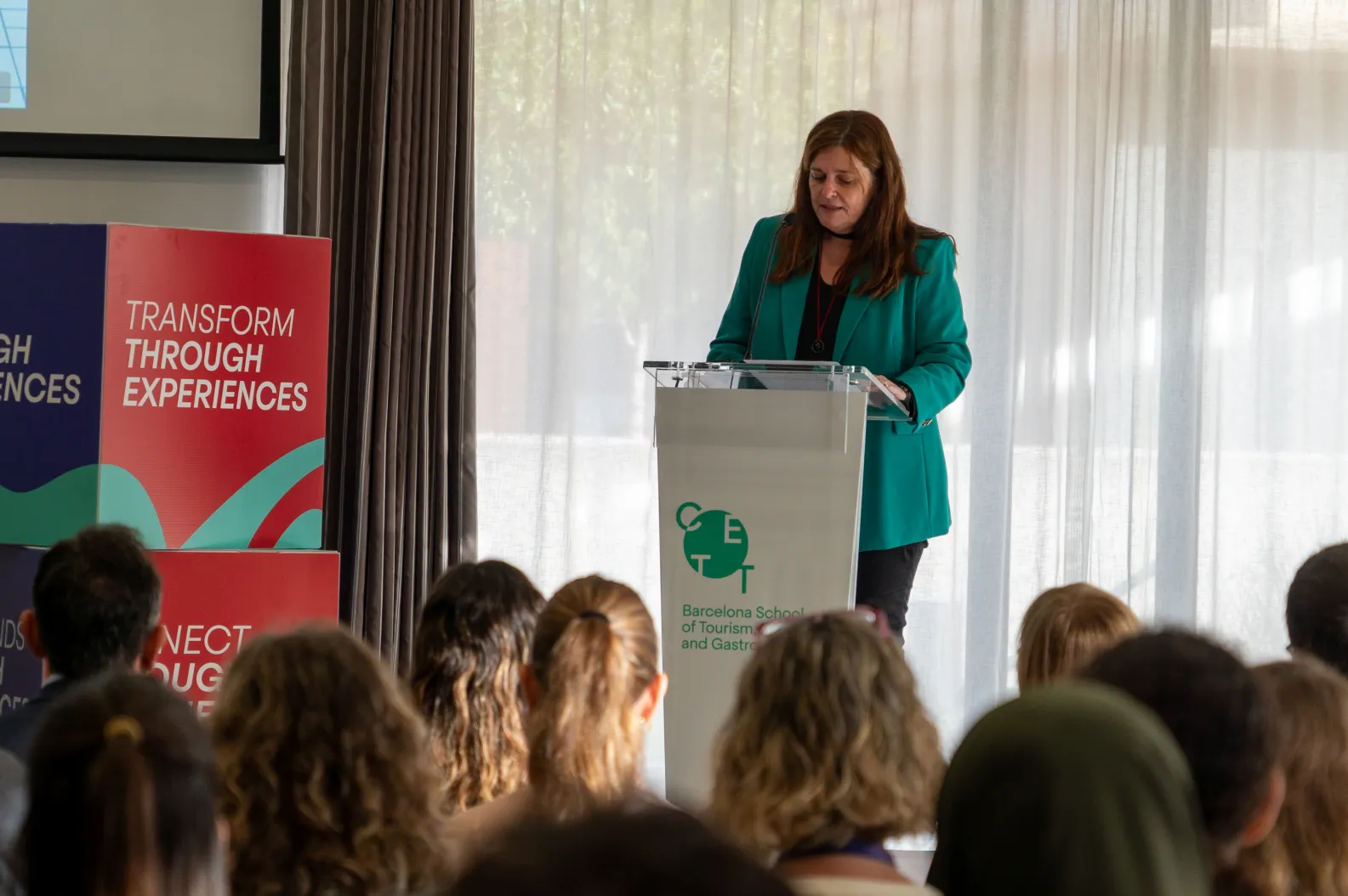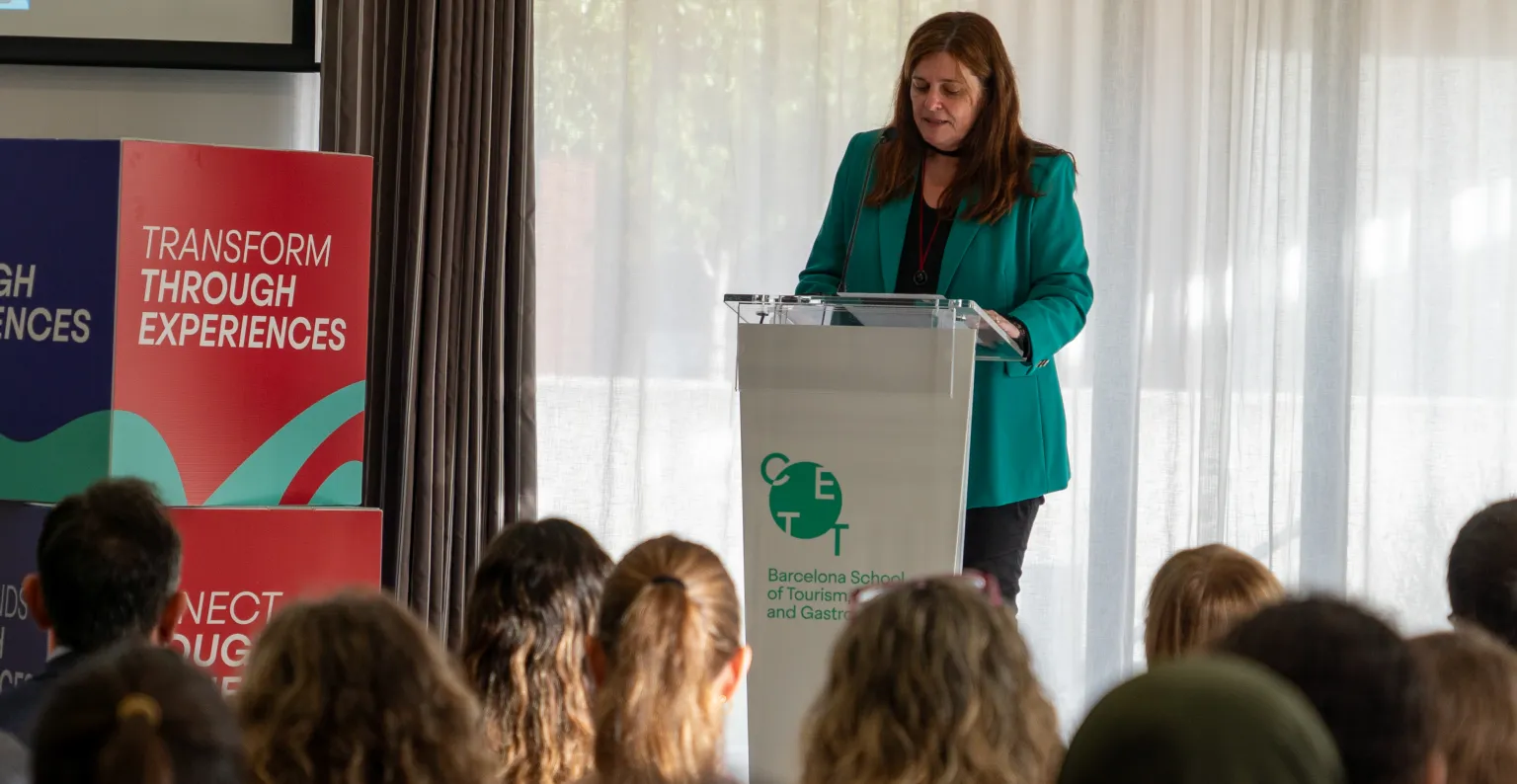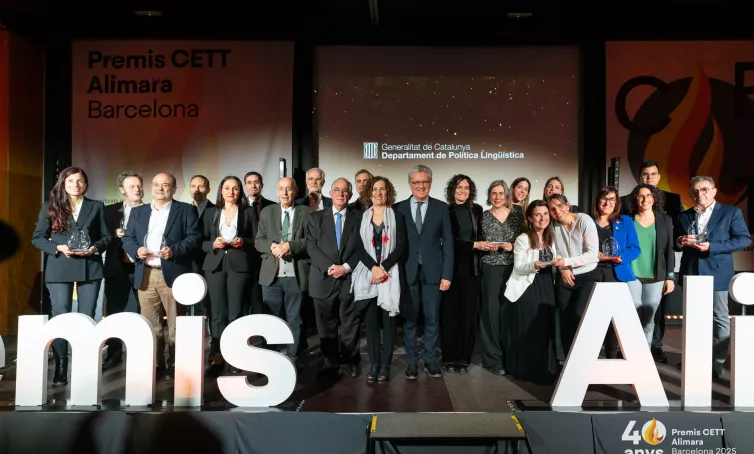CETT What’s Next | Narrative, a Key Element in Creating Immersive Tourism Experiences
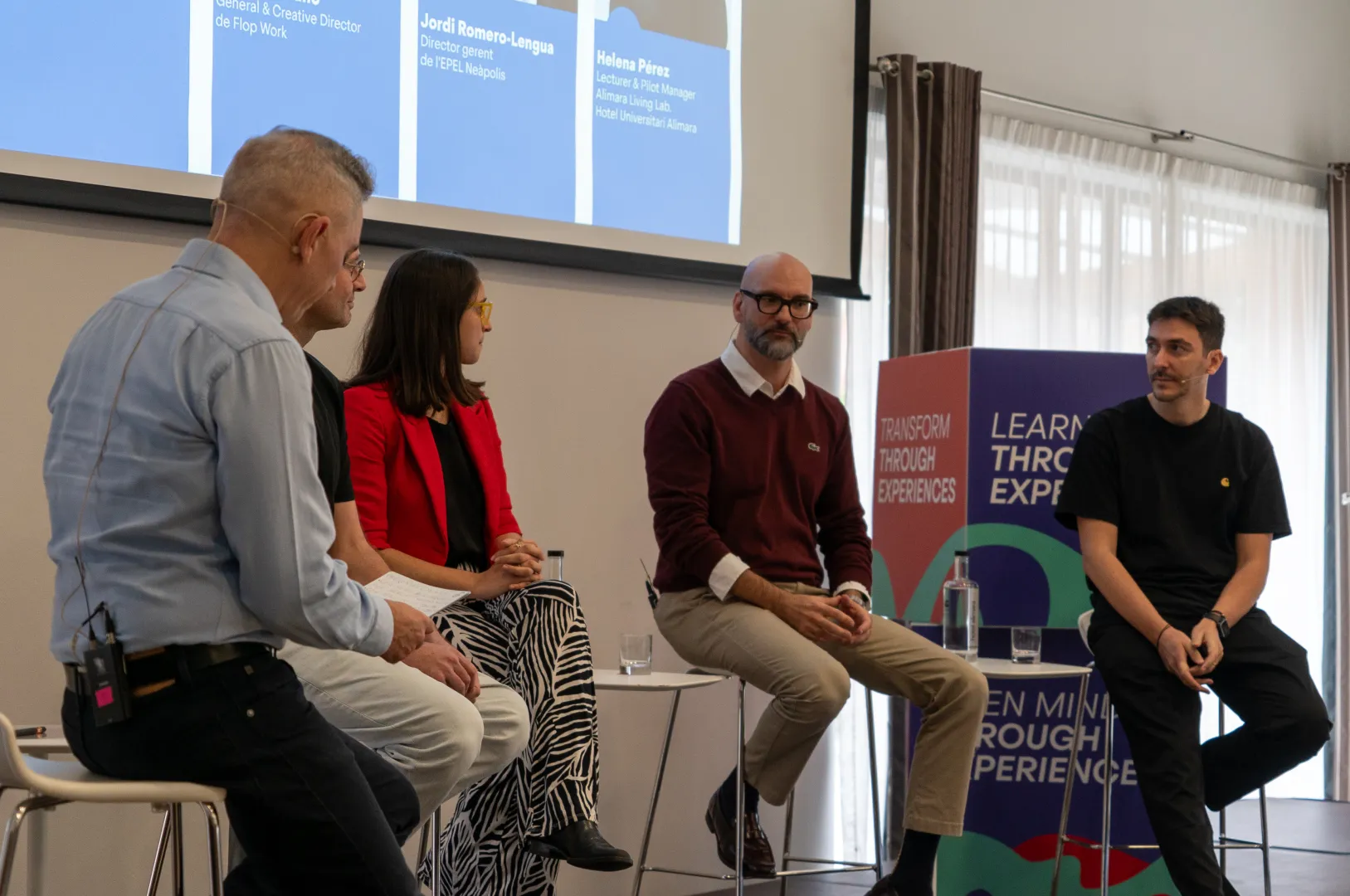
CETT What’s Next? Has brought together professionals from the immersive experience sector to reflect on its adoption within the tourism industry.
The CETT What’s Next? Tourism forum, organized by CETT, School of Tourism, Hospitality, and Gastronomy — a center affiliated with the Universitat de Barcelona — with the support of the Diputació de Barcelona, explored the role of immersive technologies as a new driver of the tourism experience.
CETT What’s Next 2025?
The experts gathered agreed on a key idea when using immersive technologies: never lose sight of the main goal—communicating with meaning. It is essential to know what story you want to tell, why, and equally important, to whom: in other words, building a narrative. In today’s context, communication and connection are essential, and the future demands interaction.
In this regard, Jorge Escobar, director of Framemov, a company specializing in immersive spaces, stated that “creativity is absolutely essential. No matter how much technology we have, if we don’t have a good story, and we don’t know how to deliver it to the audience, we won’t achieve anything”.
Along the same lines, Bernat Lozano, creative director at Flop Work, an immersive experience agency, emphasized that “it’s not just about making an attractive presentation of the facts; it’s about communicating effectively.” To measure success, he highlighted the value of data and its analysis, noting that “the technology is already here; now it’s time to work on lines of code to take advantage of it.”
The Hotel Alimara, part of the CETT Campus and the first university hotel in Europe, is already immersed in this trend leadership process. As explained by Helena Pérez, Lecturer & Pilot Manager of the Alimara Living Lab, projects such as Neuroturístic have made it possible to collect and analyze data to redesign hospitality spaces that respond to user needs.
Meanwhile, Jordi Romero-Lengua, general director of Neàpolis, a public innovation agency, reminded attendees of the importance of understanding innovation beyond technology. He also stressed the need to conceptualize these solutions with governance and citizenship criteria because “from the public administration, we want to promote the impact of all technological opportunities in the territory.”
On the other hand, during the conversation between María San Millán Lomas, Tourism Marketing Specialist at the Barcelona Provincial Council, and Héctor Zapata, President of Tetravol, the immersive solutions developed by the company were presented: from virtual and augmented reality applications for tourism and education to holograms, digital twins, simulators, and interactive experiences such as those created for Casa Batlló, the University of Barcelona, and the Aquarium.
Ultimately, the experts agreed that new tools are not the solution in themselves, and that it is essential to maintain a human-centered approach, avoiding, as Lozano warns, “being dazzled and losing sight of the goal: communicating.”
Immersive Experiences in Tourism: What’s Next?
During the session Total Immersion: The Technological Journey Transforming Tourism and Events, Albert Lorente —digital consultant and lecturer at CETT-UB— offered a historical overview of immersive technologies, from the first simulators to the metaverse and artificial intelligence, highlighting their impact on tourism and events.
According to Anna Herrera Carballo, Deputy for Tourism of the Diputació de Barcelona, “innovation is not an option, but a shared responsibility in a sector as dynamic as tourism.” Therefore, the next steps require a vital intersection between academia, business, and public administration.
In this direction, Romero-Lengua advocates, aligned with CETT’s mission, for the creation of “an ecosystem of talent that enhances the attractiveness of this market and its creative capacity.” He also highlighted the potential of immersive experiences as a pathway for learning, connection, and engagement with the territory—an avenue the sector is already exploring.
The tourism sector must identify opportunities for adopting these technologies, and Escobar proposes corporate tourism as an ideal environment to take risks and invest: a business model that requires dynamic, experiential interactions and that can act as an entry point.
